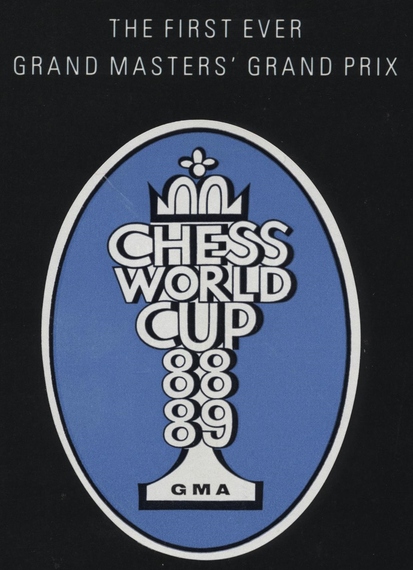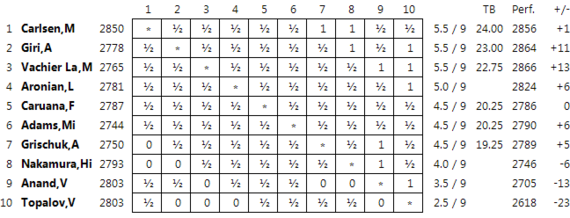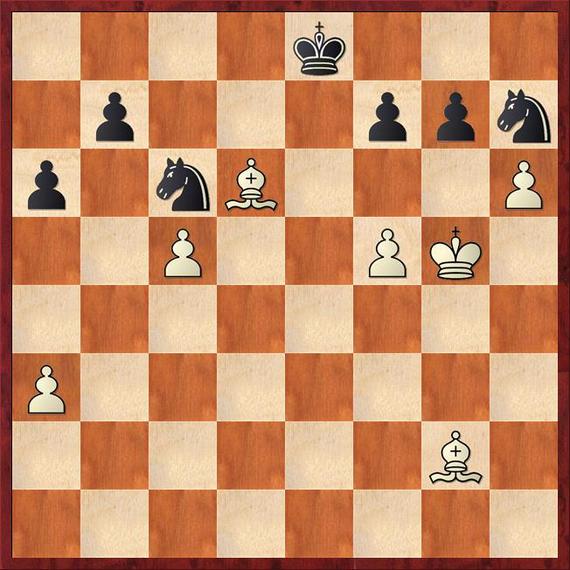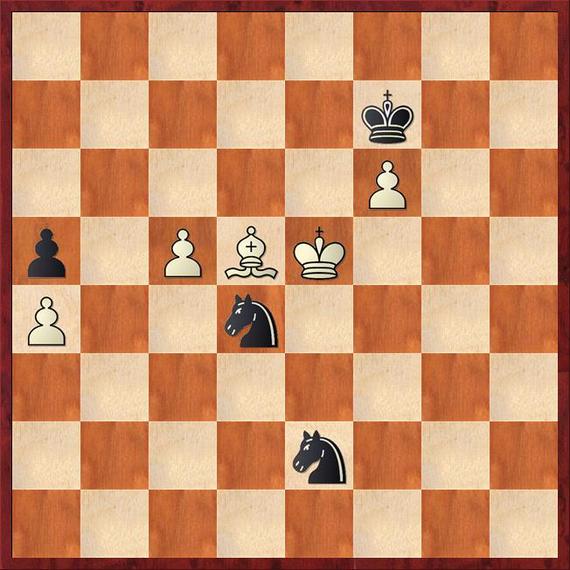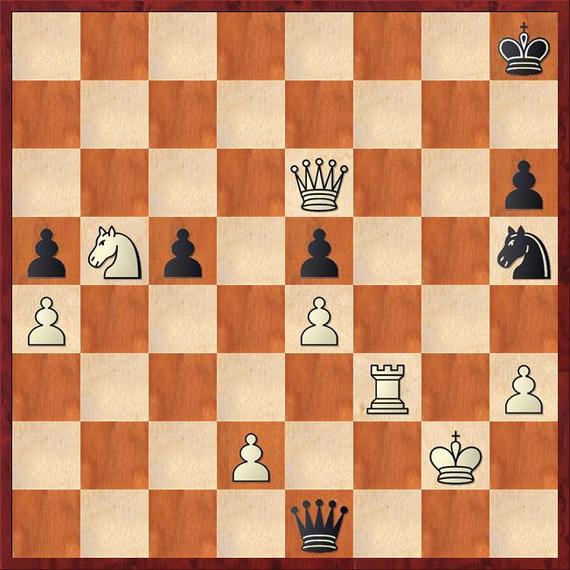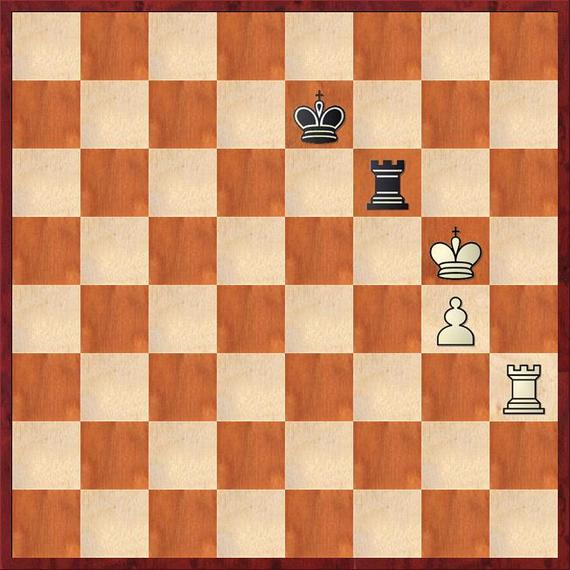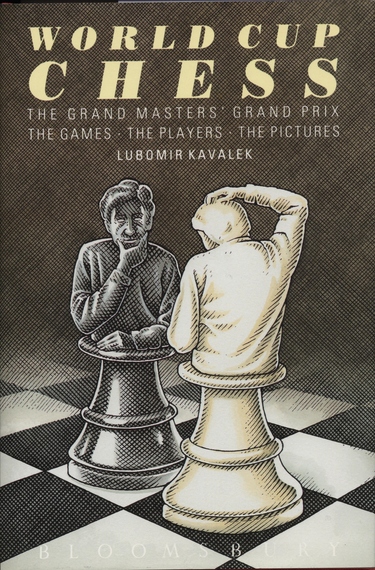The world chess champion Magnus Carlsen won the Grand Chess Tour, a three tournaments bonanza played in Norway, the USA and England, and involving the world's best players. It was loosely based on the $1,2 million 1988-1989 Chess World Cup, a series of six Grand Prix tournaments I have organized for the Grandmasters Association as its Executive Director. Garry Kasparov collected $175,000, finishing first ahead of Anatoly Karpov.
Twenty-six years later, Kasparov set up the Grand Chess Tour, borrowing some ideas from the GMA's World Cup. Both events were organized outside of FIDE as a sort of rebellion. I can go even further back and include the 1979 Montreal, won by Mikhail Tal and Karpov. It was an attempt to bring Bobby Fischer back to the chessboard.
"You know tournaments don't turn me on generally," Fischer wrote to me in March 1979, "my feeling is that matches are more interesting in terms of proving something or other."
Carlsen did not start the Tour well and finished just a half point above the last place in Norway Chess in Stavenger last June. He recovered at the Sinquefield Cup in Saint Louis in September, sharing second place. He needed to finish first in London in December for an overall victory in the Tour.
But Carlsen began the London Classic slowly, drawing the first six games, fast running out of time. He made his move in round seven, defeating the U.S. Champion Hikaru Nakamura. After another draw, he faced a must-win situation in the last round. Because of the slower pace at the top, five players had a chance to win the tournament. In a dramatic encounter, Carlsen defeated Alexander Grischuk and shared first prize. Moreover, he drew a bye in the playoff initial round with the best tiebreak and won the final match against Maxime Vachier-Lagrave to claim first place.
Much has been said about Carlsen being fortunate. True, in his three wins in London, his opponents could have drawn the games, but they missed their chances. Strong players create their own luck.
Nakamura never defeated Carlsen in a classic-time game and his losses reached double-digits. In London, the U.S. champion was again under pressure most of the game, but there was a single moment, when Hikaru could have escaped.
Carlsen,Magnus (2850) - Nakamura,Hikaru (2793)
7th London Classic 2015
Everybody loves a bishop pair in the 21st century. The bishops like to run, they are the long-range weapons and they need space. Opening the position is mandatory, but Carlsen also needs to penetrate with his king. To achieve that, he has to run the rook-pawn to h6, hoping that the pawn on f7 becomes a target.
56.Kh4 gxh6 57.Kh5 Nf6+ 58.Kxh6 Ng4+ 59.Kg7
The king is in and tickles the pawn on f7.
59...Nd4 60.Be4 Nf2 61.Bb1 Ng4 62.Bf4 f6?
Giving away the square g6 and leaving the f-pawn suspended in the air unable to be helped by the king. The white king has the squares g7 and g6 to tango around. 62...Ke7 63.Be4 a5 is better.
63.Be4 Nf2 64.Bb1 Ng4 65.Be4 Nf2 66.Bxb7!
After a few repetitions to gain time on the clock, Magnus gets down to business. He had to foresee the upcoming bishop sacrifice.
66...Nd3
After 66...Nxf5+ 67.Kxf6 Nd4 68.c6 wins.
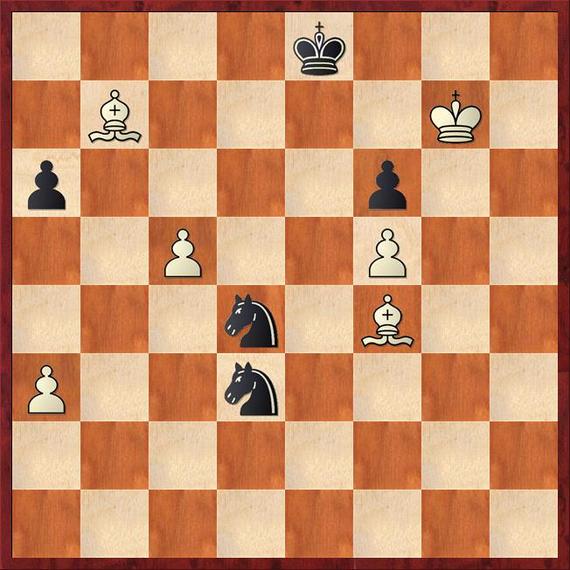
67.Kxf6!
Magnus goes for beauty, sacrificing a bishop and taking advantage of the short-legged knights. It was possible to play simply 67.Bd6 Nxf5+ 68.Kxf6 Nxd6 69.Bc6+! Kd8 70.cxd6 Nb2 71.Ke6 Nc4 72.a4 a5 73.Kd5 and the white king should be able to outmaneuver the knight to win the a-pawn.
67...Nxf4 68.Ke5 Nfe2
The horses protect each other, but they can also trip over each other and instead of running free, they are paralyzed. Nakamura cannot buy freedom with 68...Nxf5 69.Kxf5 Nd3 70.c6 Kd8 71.Bxa6 Nc5 72.Bb5 Kc7 73.Ke5 Kb6 74.a4 Kc7 75.a5 and one of the pawns queens.
69.f6?
The wrong pawn and the wrong square. Both sides committed errors by moving the pawn to f6. After 69.c6! Black has to give up the knight back. 69...Nxc6+ (69...Kd8 70.f6 wins.) 70.Bxc6+ Kf8 71.Bd5 a5 72.Bc4 the pawn is less exposed on f5. White picks up the a-pawn and wins.
69...a5 70.a4 Kf7 71.Bd5+
71...Kf8?
Losing. Hikaru just missed a draw. The black king should have stayed around the f-pawn: 71...Kg6! 72.Be4+ Kf7 73.c6 Nxc6+ 74.Bxc6 Nc3 75.Bd7 Nd1 76.Be6+ Kf8 77.Bb3 Nb2 and White cannot make any progress. Black just moves the king. If the white king comes to c3 to attack the knight, Black liquidates both pawns starting with Nb2xa4. Draw.
72.Ke4 Nc2
72...Ke8 73.Ke3 Black can't untangle the knights and White simply threatens to win with 74.Bc4.
73.c6 Nc3+ 74.Ke5 Nxa4 75.Bb3
An unusual fork!
75...Nb6 76.Bxc2 a4 77.c7 Kf7
77...a3 78.Bb3 Ke8 79.Kd6 Nc8+ 80.Kc6 wins.
78.Bxa4 Black resigned.
Carlsen gave the impression this year that he wanted to sharpen his play before it became stale. In some games, he took risks that went beyond the point of no return. Against Grischuk he overplayed his hand, but all was well that ended well.
Carlsen,Magnus (2834) - Grischuk,Alexander (2747)
7th London Classic 2015
29...Qh4!
With the queen and knight lost on the queenside, Carlsen has to defend against overwhelming power of the four black attacking pieces.
30.fxe6
Magnus is gambling since a draw is not good enough. The objectively best 30.Nxe5 leads to a draw after 30...Qe1+ 31.Rf1! (31.Kh2? dxe5 32.Qd6 (32.Nd6 Ng3 33.Nxf7+ Kh7-+) 32...Qe2! wins.) 31...Rxg2+ 32.Kxg2 Qg3+ 33.Kh1 Qxh3+ 34.Kg1 Qg3+ with a perpetual check.
30...fxe6?!
This is still a playable move, but Grischuk could have turned the tables with an exchange sacrifice: 30...Rxg4! 31.hxg4 Qh2+ 32.Kf2 Nf4 33.Rg3 Nxe6 34.Rf3 Nf4 35.Rg3 Ng6 36.Re3 Nh4-+]
31.Nxe5 dxe5
Grischuk could have drawn again with 31...Qe1+ 32.Rf1 (32.Kh2 Nf4 33.Ng6+ Rxg6 34.Qc8+ Rg8-+ 35.Qxg8+ Kxg8 36.Rxf4 Qxd2-+) 32...Rxg2+!=.
32.Qxe6
The queen protects the pawn on h3, forcing Black to find the only way to equalize.
32...Qe1+?
Grischuk missed 32...Qg5! 33.Rf2 Nf4 34.Qg4 with roughly equal chances.
33.Kh2 Rxg2+
White is better after 33...Qxd2 34.Qxe5+ Rg7 35.Rf8+ Kh7 36.Qf5+ Rg6 37.Qf7+ Rg7 38.Qf3±.
34.Kxg2
Qxd2+?
Losing. Grischuk had the last chance to stay in the game with 34...Qe2+ 35.Rf2 Nf4+ 36.Kg3 Qxf2+ 37.Kxf2 Nxe6 38.Nd6 c4 39.Nxc4 Nc5 40.Kf3 Nxa4 41.Nxa5 Kg7 White is a pawn up, but it may not be enough.
35.Kg1 Qe1+ 36.Rf1 Qe3+ 37.Rf2 Qe1+
After 37...Qg3+ 38.Kf1 Qd3+ 39.Ke1 Qe3+ 40.Kd1! Qxf2 41.Qxh6+ Kg8 42.Qxh5 and White should win.
38.Kg2 Black resigned.
Carlsen's last victory came in the rapid play final against Vachier-Lagrave. The rook endgames are often slippery slopes and the Frenchman did not find the right path to a draw.
Carlsen,Magnus (2834) - Vachier-Lagrave,Maxime (2773)
7th London Classic TB 2015
51...Rf1?
Under pressure most of the game, Vachier-Lagrave blunders. The four-corner maneuver, with the rook visiting the squares h1,a1,a8 and h8, draws: 51...Ra1! 52.Rxh3 Otherwise 52...h2. 52...Ra8! White cannot push the g-pawn now and other moves lead nowhere:
A. 53.g5 Rh8+ 54.Kg4 Rxh3 55.Kxh3 Ke6 56.Kg4 Kf7 57.Kh5 Kg7=;
B. 53.Kg6 Rg8+ 54.Kf5 Rf8+ 55.Ke4 (55.Kg5 Rg8+ etc.) 55...Re8+ 56.Kf4 Rf8+ 57.Kg3 Rg8=;
C. 53.Re3 Rh8+ 54.Kg6 Rg8+ 55.Kf5 Rf8+ 56.Kg5 Rg8+ 57.Kh4 Rh8+ 58.Kg3 Rg8 draw.
52.Rxh3 Ke7
Or 52...Rf8 When I was younger, the veteran GM Ludek Pachman gave us lessons on the rook endgames. In a similar position, he would have asked: 'How do we best cut off the black king from the pawn?' The lessons abruptly ended when somebody replied:'With a saw!'
White has to be precise here: 53.Rd3+! (Not 53.Re3? Rh8+ 54.Kg5 Rg8+ 55.Kh4 Rh8+ 56.Kg3 Rg8!=) 53...Ke6 54.Re3+! Kd6 (54...Kf7 55.Rf3+ wins.) 55.g5 the black king is cut off and White wins.
53.Kg6 Rf6+ 54.Kg7 Rf7+ 55.Kg6 Rf6+ 56.Kg5
56...Ra6
Or 56...Rf1 57.Rh7+ Kf8 58.Kg6 Kg8 59.Rg7+ Kf8 (59...Kh8 60.Rf7! wins.) 60.Ra7 Rg1 61.g5 Rg2 62.Ra8+ Ke7 63.Rg8 Rg1 64.Kh7 and White pushes the g-pawn to g6 and achieves the winning Lucena position.
57.Rf3 Black resigned.
Some chess fans complained about the cumbersome tie-breaking rules of the Grand Chess Tour. It is hard to find the logic behind the tiebreaks. Carlsen got the second place in Saint Louis without a playoff by having the best Sonnenborn system tiebreak . A three-way tie for first in London was decided by a playoff. Vachier-Lagrave won two games against Anish Giri, but it was not enough. A single loss to Carlsen decided the tournament and an overall Tour victory. But the rules were known to everybody before the Tour began and Magnus won fair and square.
The top three winners of the Grand Chess Tour:
Carlsen $75,000, Giri $50,000 and Aronian $25,000.
They also secured participation in the 2016 GCT.
One can understand the obsession with having a single winner in a tournament. It comes from the American tournaments. For example, Nakamura won the Millionaire Open in Las Vegas last October in a similar way Carlsen won in London. But the Grand Chess Tour points could have been simplified. All Kasparov needed to remember was how it was done in 1989.
Adjusting it for the GCT, it would state:
"The GCT points for each player are based on a combination of the actual score from eight games per tournament (games against the local invitees don't count) and placement points in each tournament in descending order from nine points for first place to one point for ninth place. In the event of a tie, each player involved in a tie receives the average of the points assigned to all position in the tie." Just two sentences.
All 25 players taking part in the 1988-89 World Cup played four tournaments and only the three best results counted. Kasparov also wanted to have four tournaments for the GCT, but the event scheduled for Asia didn't materialize. As a result the players were under more pressure and every single game counted. Still, it was a fabulous Tour and we are looking forward to the 2016 version.
Note that in the replay windows below you can click either on the arrows under the diagram or on the notation to follow the game.
Image by Ray Morris-Hill


